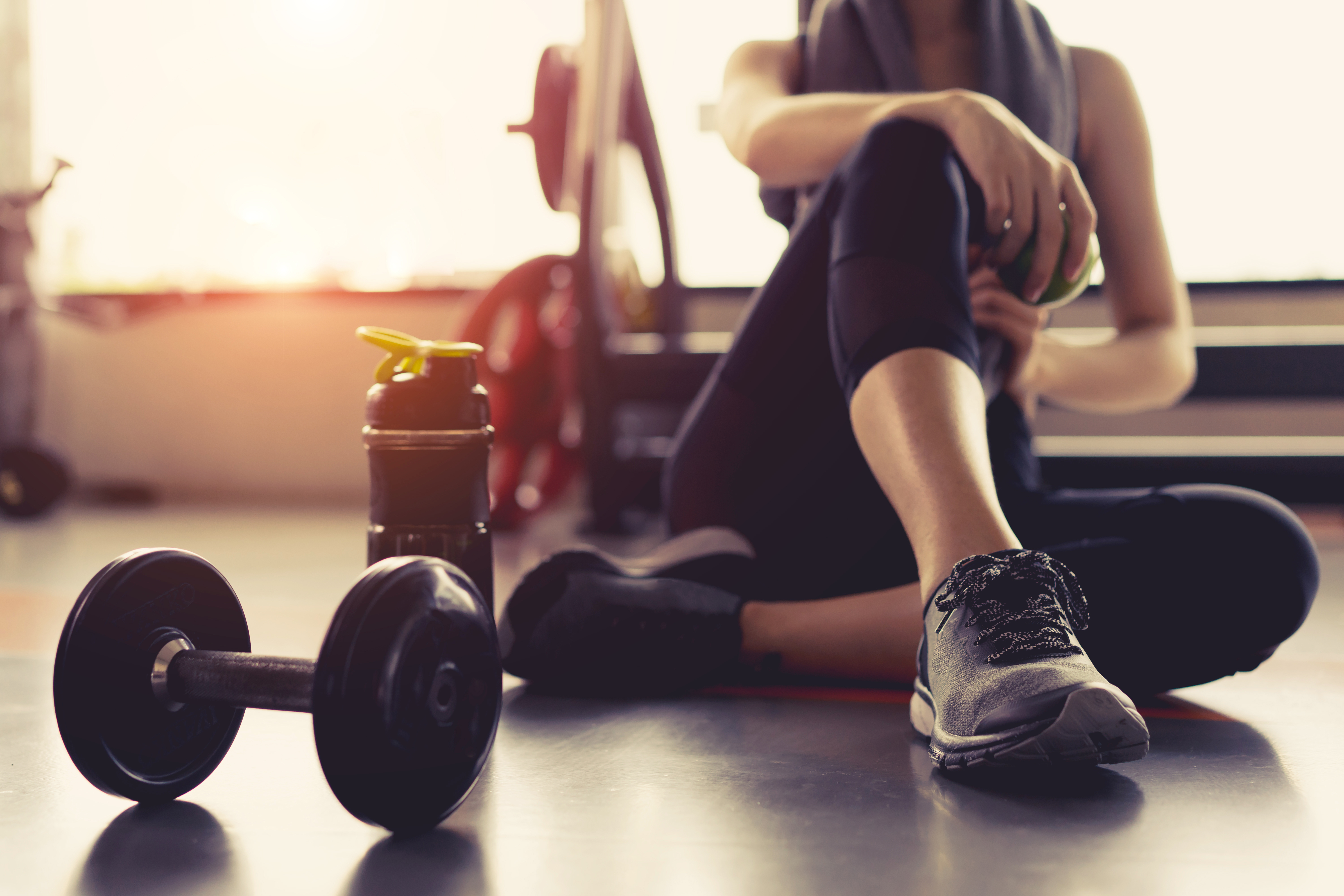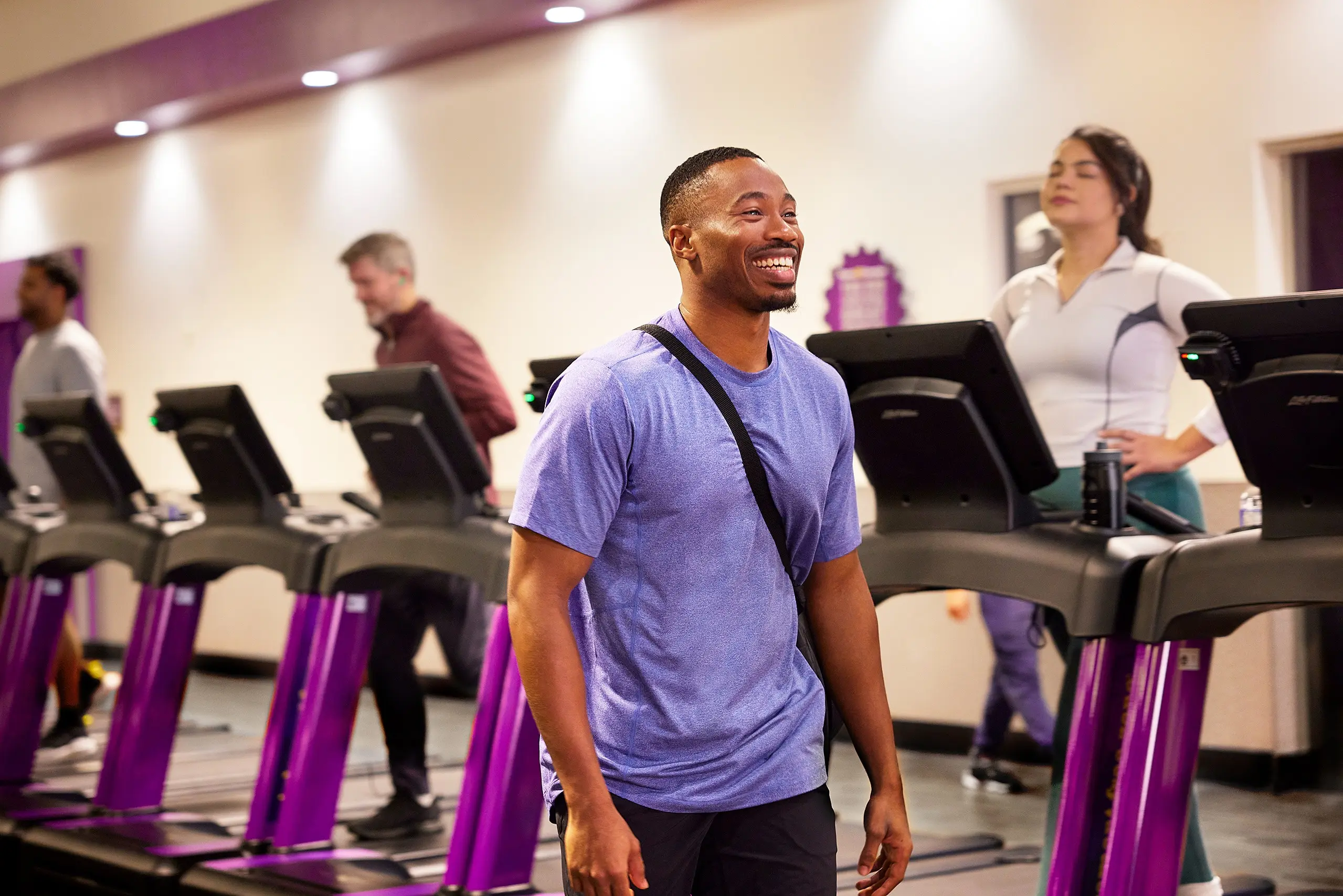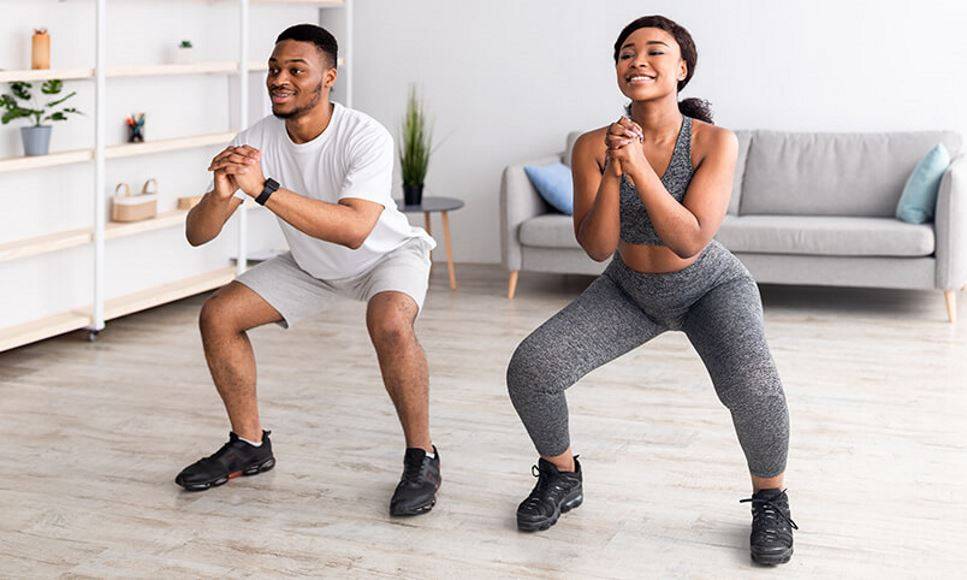**The Complete Fitness Guide: Understanding, Achieving, and Maintaining Optimal Health**
Fitness is often seen as a personal goal, one that encompasses not just physical strength, but overall well-being. It is about more than achieving a certain body type or running a specific distance—fitness is about empowering the body to move, function, and perform at its best. Whether you're a seasoned athlete or just beginning your journey, fitness is a lifelong pursuit that has profound benefits for both the body and mind.
In this comprehensive guide to fitness, we will explore what fitness truly means, why it’s essential, how to build a personalized fitness routine, and how to maintain it for long-term success. From understanding the fundamental components of fitness to the role of nutrition, recovery, and mindset, this article will provide a roadmap to help you achieve a healthier, more active lifestyle.
### 1. Defining Fitness: What It Means and Why It Matters
When we talk about fitness, we're referring to the body's ability to function effectively in various situations, from everyday activities to intense physical challenges. Fitness is the result of consistent exercise, proper nutrition, and rest—each of which plays a critical role in maintaining and improving overall health.
#### 1.1. Physical Fitness vs. Health
While "physical fitness" refers to the ability to perform specific tasks, **health** encompasses a broader spectrum of factors, including mental health, emotional stability, and the absence of disease. Physical fitness is a key component of overall health, and the two are interconnected. A strong body is better able to fight illness, endure physical stress, and perform complex activities.
#### 1.2. Holistic Fitness: Body, Mind, and Spirit
Fitness is not just about physical strength. A balanced approach to fitness includes physical, mental, and emotional well-being. For example:
- **Physical fitness** focuses on building strength, endurance, flexibility, and cardiovascular health.
- **Mental fitness** involves practices like mindfulness, stress management, and mental clarity.
- **Emotional fitness** refers to emotional intelligence, resilience, and the ability to maintain positive mental health.
An integrated approach ensures that all aspects of fitness are nourished, allowing for sustainable progress in each area.
### 2. The Essential Components of Fitness
To develop a well-rounded fitness regimen, it's important to understand the key components that contribute to overall fitness. These components form the foundation of any exercise program, whether you're aiming to improve endurance, build strength, or enhance flexibility.
#### 2.1. Cardiovascular Endurance
Cardiovascular endurance refers to the ability of the heart and lungs to deliver oxygen to the muscles during sustained physical activity. This component is essential for overall health and longevity, as it supports the body's ability to perform any task that requires prolonged energy output.
**How to improve cardiovascular endurance:**
- Running, jogging, or sprinting
- Cycling or spinning
- Swimming
- Hiking
- Rowing
- Dancing
- High-intensity interval training (HIIT)
Building cardiovascular endurance increases stamina, helps burn fat, improves heart health, and reduces the risk of cardiovascular disease.
#### 2.2. Muscular Strength
Muscular strength refers to the ability of the muscles to generate force. This is vital for performing everyday tasks such as lifting, pushing, pulling, and carrying. Increased muscular strength also contributes to better posture, joint stability, and a reduced risk of injury.
**How to improve muscular strength:**
- Weightlifting (barbells, dumbbells, kettlebells)
- Resistance bands
- Bodyweight exercises (push-ups, squats, lunges)
- Functional training (deadlifts, kettlebell swings)
Strength training is a crucial part of any fitness regimen. It builds lean muscle mass, increases metabolism, and helps prevent muscle loss that occurs with age.
#### 2.3. Muscular Endurance
Muscular endurance refers to the ability of a muscle or group of muscles to perform repetitive contractions without fatigue. This is different from muscular strength, as it focuses on the muscle's ability to sustain exertion over a long period of time.
**How to improve muscular endurance:**
- Performing high-repetition weight training (lighter weights, more reps)
- Bodyweight exercises performed for duration (e.g., holding a plank)
- Circuit training
Increased muscular endurance enhances performance in sports and reduces fatigue in physical tasks, making everyday activities easier and more manageable.
#### 2.4. Flexibility
Flexibility is the range of motion available at a joint. Improved flexibility helps prevent injuries, reduce muscle tension, and enhance movement efficiency. It also improves posture and enhances the body’s ability to perform both high-intensity and low-intensity activities.
**How to improve flexibility:**
- Stretching (dynamic and static)
- Yoga or Pilates
- Foam rolling
- Tai Chi
Flexibility exercises should be performed regularly to maintain joint health and range of motion. Stretching before and after workouts helps prevent muscle tightness and increases overall mobility.
#### 2.5. Body Composition
Body composition refers to the proportion of fat and lean mass in the body. A healthy body composition includes lower body fat and higher lean muscle mass. Achieving a balanced body composition can improve athletic performance, enhance energy levels, and support long-term health.
**How to improve body composition:**
- Cardiovascular exercise (for fat loss)
- Strength training (to build muscle)
- Balanced diet (focus on nutrient-dense foods)
Maintaining a healthy body composition is essential for reducing the risk of obesity, diabetes, and cardiovascular disease.
### 3. Types of Exercise to Achieve Fitness Goals
To achieve and maintain a balanced level of fitness, it’s important to engage in a variety of exercises that target different components of fitness. A well-rounded exercise program includes aerobic activities, strength training, flexibility exercises, and rest days for recovery.
#### 3.1. Aerobic Exercise
Aerobic exercise is any activity that increases your heart rate and promotes better cardiovascular health. Regular aerobic exercise can help improve stamina, endurance, and overall heart health, while also promoting fat loss.
**Examples of aerobic exercise:**
- Running or jogging
- Swimming
- Cycling
- Walking
- Hiking
- Dancing (e.g., Zumba, aerobic classes)
Aerobic exercise should be done at moderate to high intensity to build cardiovascular endurance and burn calories effectively.
#### 3.2. Strength Training
Strength training is essential for building muscular strength, toning muscles, and increasing metabolism. This type of exercise involves lifting weights or performing resistance-based activities that force muscles to adapt and grow stronger.
**Examples of strength training:**
- Free weight exercises (squats, deadlifts, presses)
- Bodyweight exercises (push-ups, lunges, planks)
- Machine-based exercises (leg press, chest press)
- Resistance band training
Strength training should be performed at least 2-3 times per week, targeting all major muscle groups.
#### 3.3. Flexibility and Mobility Exercises
Flexibility and mobility exercises help improve joint health, reduce stiffness, and increase range of motion. These exercises enhance movement quality and are essential for reducing injury risk.
**Examples of flexibility and mobility exercises:**
- Static stretching (holding stretches for 20-30 seconds)
- Dynamic stretching (active stretches before a workout)
- Yoga and Pilates
- Foam rolling and self-myofascial release
These exercises should be performed regularly to maintain joint health and muscle elasticity.
#### 3.4. High-Intensity Interval Training (HIIT)
HIIT is a highly effective training method that alternates short bursts of intense activity with brief recovery periods. HIIT workouts improve cardiovascular endurance, burn fat, and build strength in less time than traditional steady-state cardio.
**Examples of HIIT workouts:**
- Sprint intervals
- Tabata training (20 seconds of intense exercise, followed by 10 seconds of rest)
- Circuit training (mixing bodyweight exercises with short rest intervals)
- High-intensity bodyweight exercises (burpees, jump squats, mountain climbers)
HIIT is an efficient way to improve overall fitness, especially for those with limited time.
### 4. The Role of Nutrition in Fitness
Exercise is just one part of the fitness equation; nutrition plays a crucial role in supporting performance, recovery, and long-term health. Proper nutrition helps fuel the body, rebuild muscle tissue, and provide the energy required for physical activity.
#### 4.1. Macronutrients: The Building Blocks of Fitness
Macronutrients—carbohydrates, proteins, and fats—are essential for maintaining energy levels, promoting muscle growth, and ensuring overall health.
- **Carbohydrates**: The primary fuel source for exercise, especially for high-intensity and endurance activities. Healthy carbohydrate sources include whole grains, fruits, vegetables, and legumes.
- **Proteins**: Essential for muscle repair and growth. Protein is critical after strength training to support muscle recovery. Good sources of protein include lean meats, fish, eggs, dairy, and plant-based sources like beans and lentils.
- **Fats**: Healthy fats are vital for hormone production, joint lubrication, and sustained energy. Include sources of unsaturated fats like avocados, nuts, seeds, and olive oil in your diet.
#### 4.2. Micronutrients: Vital for Optimal Health
Micronutrients such as vitamins and minerals play an important role in metabolic processes, immune function, and bone health. Key micronutrients for fitness include:
- **Vitamin D**: Important for bone health and immune function.
- **Calcium**: Essential for strong bones and muscle contractions.
- **Iron**: Supports oxygen delivery to muscles during exercise.
#### 4.3. Hydration
Staying hydrated is essential for optimal performance, as dehydration can impair muscle function, reduce endurance, and increase the risk of injury. Aim to drink water before, during, and after exercise to maintain hydration levels.
#### 4.4. Timing Your Meals
What you eat and when you eat can significantly impact your
workout performance and recovery. Eating a balanced meal with protein and carbohydrates 1-2 hours before exercise provides the body with energy for optimal performance. After exercise, focus on consuming protein and carbs to promote muscle recovery and replenish glycogen stores.
### 5. Recovery: The Key to Fitness Progress
Recovery is often overlooked but is just as important as exercise itself. Without proper rest, muscles cannot repair, grow, or become stronger. The body needs time to heal, rehydrate, and replenish energy stores after intense physical activity.
#### 5.1. Rest and Sleep
Sleep is crucial for muscle recovery and overall health. Aim for 7-9 hours of sleep per night to support optimal recovery, hormone production, and mental clarity. During sleep, the body works to repair muscles and recover from physical exertion.
#### 5.2. Active Recovery
Active recovery involves performing low-intensity exercises such as walking, cycling, or swimming on rest days to promote blood flow, reduce muscle soreness, and speed up the recovery process.
#### 5.3. Stretching and Foam Rolling
Incorporating stretching and foam rolling into your routine helps improve flexibility, reduce muscle tension, and enhance overall mobility, which are essential for preventing injuries.
### 6. Conclusion: Building a Sustainable Fitness Routine
Achieving and maintaining fitness is a lifelong commitment that requires a balance of exercise, nutrition, rest, and mental well-being. A well-rounded fitness regimen that includes cardiovascular exercise, strength training, flexibility work, and recovery will promote overall health and enhance quality of life.
Start by setting realistic goals, gradually incorporating different types of exercise into your routine, and fueling your body with the proper nutrients. With consistency, patience, and the right approach, you can build a healthier, stronger, and more active version of yourself.
Fitness is a journey, not a destination, and every step you take toward becoming more fit is an investment in your future well-being.
**The Complete Fitness Guide: Understanding, Achieving, and Maintaining Optimal Health**
Fitness is often seen as a personal goal, one that encompasses not just physical strength, but overall well-being. It is about more than achieving a certain body type or running a specific distance—fitness is about empowering the body to move, function, and perform at its best. Whether you're a seasoned athlete or just beginning your journey, fitness is a lifelong pursuit that has profound benefits for both the body and mind.
In this comprehensive guide to fitness, we will explore what fitness truly means, why it’s essential, how to build a personalized fitness routine, and how to maintain it for long-term success. From understanding the fundamental components of fitness to the role of nutrition, recovery, and mindset, this article will provide a roadmap to help you achieve a healthier, more active lifestyle.
### 1. Defining Fitness: What It Means and Why It Matters
When we talk about fitness, we're referring to the body's ability to function effectively in various situations, from everyday activities to intense physical challenges. Fitness is the result of consistent exercise, proper nutrition, and rest—each of which plays a critical role in maintaining and improving overall health.
#### 1.1. Physical Fitness vs. Health
While "physical fitness" refers to the ability to perform specific tasks, **health** encompasses a broader spectrum of factors, including mental health, emotional stability, and the absence of disease. Physical fitness is a key component of overall health, and the two are interconnected. A strong body is better able to fight illness, endure physical stress, and perform complex activities.
#### 1.2. Holistic Fitness: Body, Mind, and Spirit
Fitness is not just about physical strength. A balanced approach to fitness includes physical, mental, and emotional well-being. For example:
- **Physical fitness** focuses on building strength, endurance, flexibility, and cardiovascular health.
- **Mental fitness** involves practices like mindfulness, stress management, and mental clarity.
- **Emotional fitness** refers to emotional intelligence, resilience, and the ability to maintain positive mental health.
An integrated approach ensures that all aspects of fitness are nourished, allowing for sustainable progress in each area.
### 2. The Essential Components of Fitness
To develop a well-rounded fitness regimen, it's important to understand the key components that contribute to overall fitness. These components form the foundation of any exercise program, whether you're aiming to improve endurance, build strength, or enhance flexibility.
#### 2.1. Cardiovascular Endurance
Cardiovascular endurance refers to the ability of the heart and lungs to deliver oxygen to the muscles during sustained physical activity. This component is essential for overall health and longevity, as it supports the body's ability to perform any task that requires prolonged energy output.
**How to improve cardiovascular endurance:**
- Running, jogging, or sprinting
- Cycling or spinning
- Swimming
- Hiking
- Rowing
- Dancing
- High-intensity interval training (HIIT)
Building cardiovascular endurance increases stamina, helps burn fat, improves heart health, and reduces the risk of cardiovascular disease.
#### 2.2. Muscular Strength
Muscular strength refers to the ability of the muscles to generate force. This is vital for performing everyday tasks such as lifting, pushing, pulling, and carrying. Increased muscular strength also contributes to better posture, joint stability, and a reduced risk of injury.
**How to improve muscular strength:**
- Weightlifting (barbells, dumbbells, kettlebells)
- Resistance bands
- Bodyweight exercises (push-ups, squats, lunges)
- Functional training (deadlifts, kettlebell swings)
Strength training is a crucial part of any fitness regimen. It builds lean muscle mass, increases metabolism, and helps prevent muscle loss that occurs with age.
#### 2.3. Muscular Endurance
Muscular endurance refers to the ability of a muscle or group of muscles to perform repetitive contractions without fatigue. This is different from muscular strength, as it focuses on the muscle's ability to sustain exertion over a long period of time.
**How to improve muscular endurance:**
- Performing high-repetition weight training (lighter weights, more reps)
- Bodyweight exercises performed for duration (e.g., holding a plank)
- Circuit training
Increased muscular endurance enhances performance in sports and reduces fatigue in physical tasks, making everyday activities easier and more manageable.
#### 2.4. Flexibility
Flexibility is the range of motion available at a joint. Improved flexibility helps prevent injuries, reduce muscle tension, and enhance movement efficiency. It also improves posture and enhances the body’s ability to perform both high-intensity and low-intensity activities.
**How to improve flexibility:**
- Stretching (dynamic and static)
- Yoga or Pilates
- Foam rolling
- Tai Chi
Flexibility exercises should be performed regularly to maintain joint health and range of motion. Stretching before and after workouts helps prevent muscle tightness and increases overall mobility.
#### 2.5. Body Composition
Body composition refers to the proportion of fat and lean mass in the body. A healthy body composition includes lower body fat and higher lean muscle mass. Achieving a balanced body composition can improve athletic performance, enhance energy levels, and support long-term health.
**How to improve body composition:**
- Cardiovascular exercise (for fat loss)
- Strength training (to build muscle)
- Balanced diet (focus on nutrient-dense foods)
Maintaining a healthy body composition is essential for reducing the risk of obesity, diabetes, and cardiovascular disease.
### 3. Types of Exercise to Achieve Fitness Goals
To achieve and maintain a balanced level of fitness, it’s important to engage in a variety of exercises that target different components of fitness. A well-rounded exercise program includes aerobic activities, strength training, flexibility exercises, and rest days for recovery.
#### 3.1. Aerobic Exercise
Aerobic exercise is any activity that increases your heart rate and promotes better cardiovascular health. Regular aerobic exercise can help improve stamina, endurance, and overall heart health, while also promoting fat loss.
**Examples of aerobic exercise:**
- Running or jogging
- Swimming
- Cycling
- Walking
- Hiking
- Dancing (e.g., Zumba, aerobic classes)
Aerobic exercise should be done at moderate to high intensity to build cardiovascular endurance and burn calories effectively.
#### 3.2. Strength Training
Strength training is essential for building muscular strength, toning muscles, and increasing metabolism. This type of exercise involves lifting weights or performing resistance-based activities that force muscles to adapt and grow stronger.
**Examples of strength training:**
- Free weight exercises (squats, deadlifts, presses)
- Bodyweight exercises (push-ups, lunges, planks)
- Machine-based exercises (leg press, chest press)
- Resistance band training
Strength training should be performed at least 2-3 times per week, targeting all major muscle groups.
#### 3.3. Flexibility and Mobility Exercises
Flexibility and mobility exercises help improve joint health, reduce stiffness, and increase range of motion. These exercises enhance movement quality and are essential for reducing injury risk.
**Examples of flexibility and mobility exercises:**
- Static stretching (holding stretches for 20-30 seconds)
- Dynamic stretching (active stretches before a workout)
- Yoga and Pilates
- Foam rolling and self-myofascial release

These exercises should be performed regularly to maintain joint health and muscle elasticity.
#### 3.4. High-Intensity Interval Training (HIIT)
HIIT is a highly effective training method that alternates short bursts of intense activity with brief recovery periods. HIIT workouts improve cardiovascular endurance, burn fat, and build strength in less time than traditional steady-state cardio.
**Examples of HIIT workouts:**
- Sprint intervals
- Tabata training (20 seconds of intense exercise, followed by 10 seconds of rest)
- Circuit training (mixing bodyweight exercises with short rest intervals)
- High-intensity bodyweight exercises (burpees, jump squats, mountain climbers)
HIIT is an efficient way to improve overall fitness, especially for those with limited time.
### 4. The Role of Nutrition in Fitness
Exercise is just one part of the fitness equation; nutrition plays a crucial role in supporting performance, recovery, and long-term health. Proper nutrition helps fuel the body, rebuild muscle tissue, and provide the energy required for physical activity.
#### 4.1. Macronutrients: The Building Blocks of Fitness
Macronutrients—carbohydrates, proteins, and fats—are essential for maintaining energy levels, promoting muscle growth, and ensuring overall health.
- **Carbohydrates**: The primary fuel source for exercise, especially for high-intensity and endurance activities. Healthy carbohydrate sources include whole grains, fruits, vegetables, and legumes.
- **Proteins**: Essential for muscle repair and growth. Protein is critical after strength training to support muscle recovery. Good sources of protein include lean meats, fish, eggs, dairy, and plant-based sources like beans and lentils.
- **Fats**: Healthy fats are vital for hormone production, joint lubrication, and sustained energy. Include sources of unsaturated fats like avocados, nuts, seeds, and olive oil in your diet.
#### 4.2. Micronutrients: Vital for Optimal Health
Micronutrients such as vitamins and minerals play an important role in metabolic processes, immune function, and bone health. Key micronutrients for fitness include:
- **Vitamin D**: Important for bone health and immune function.
- **Calcium**: Essential for strong bones and muscle contractions.
- **Iron**: Supports oxygen delivery to muscles during exercise.
#### 4.3. Hydration
Staying hydrated is essential for optimal performance, as dehydration can impair muscle function, reduce endurance, and increase the risk of injury. Aim to drink water before, during, and after exercise to maintain hydration levels.
#### 4.4. Timing Your Meals
What you eat and when you eat can significantly impact your
workout performance and recovery. Eating a balanced meal with protein and carbohydrates 1-2 hours before exercise provides the body with energy for optimal performance. After exercise, focus on consuming protein and carbs to promote muscle recovery and replenish glycogen stores.
### 5. Recovery: The Key to Fitness Progress
Recovery is often overlooked but is just as important as exercise itself. Without proper rest, muscles cannot repair, grow, or become stronger. The body needs time to heal, rehydrate, and replenish energy stores after intense physical activity.
#### 5.1. Rest and Sleep
Sleep is crucial for muscle recovery and overall health. Aim for 7-9 hours of sleep per night to support optimal recovery, hormone production, and mental clarity. During sleep, the body works to repair muscles and recover from physical exertion.
#### 5.2. Active Recovery
Active recovery involves performing low-intensity exercises such as walking, cycling, or swimming on rest days to promote blood flow, reduce muscle soreness, and speed up the recovery process.
#### 5.3. Stretching and Foam Rolling
Incorporating stretching and foam rolling into your routine helps improve flexibility, reduce muscle tension, and enhance overall mobility, which are essential for preventing injuries.
### 6. Conclusion: Building a Sustainable Fitness Routine
Achieving and maintaining fitness is a lifelong commitment that requires a balance of exercise, nutrition, rest, and mental well-being. A well-rounded fitness regimen that includes cardiovascular exercise, strength training, flexibility work, and recovery will promote overall health and enhance quality of life.
Start by setting realistic goals, gradually incorporating different types of exercise into your routine, and fueling your body with the proper nutrients. With consistency, patience, and the right approach, you can build a healthier, stronger, and more active version of yourself.

Fitness is a journey, not a destination, and every step you take toward becoming more fit is an investment in your future well-being.



